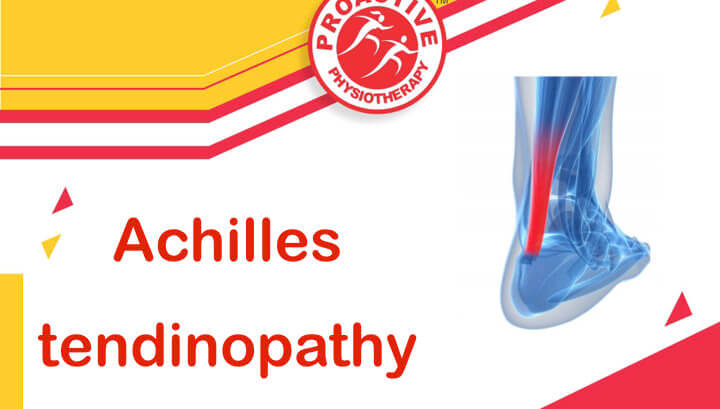Achilles Tendinopathy Part 1
The Achilles tendon is the biggest and strongest tendon in the human body. The tendon has the capacity to resist large tensile forces. It stems from a distal confluence of the gastrocnemius and soleus muscle and inserts at the bottom of the calcaneus.
It can be described as
• Mid-point tendinopathy – injury at the tendon body
• Insertional tendinopathy- injury occurs at the point where tendon attaches to the calcaneal bone
Tendinopathy can be devided into three stages:
1. Reactive tendinopathy – The extracellular matrix is altered with increased proteoglycan content but with little change in the collagen. This process occurs in response to i) acute overload, ii) return to loading after a rest, or iii) following a direct blow to the tendon and is reversible if appropriately managed.
2. Tendon disrepair– greater disruption of the extracellular matrix and possible vascular and neuronal ingrowth. These tendons are difficult to distinguish clinically but are more common in a young person with a chronically overloaded tendon
3. Degenerative tendinopathy– The tendon often remains hypercellular but there is little capacity for reversal of pathology due to significant (collagen) fibrillar disorganisation. Typically, these tendons are seen in active middle age people, and clinically they may have focal nodular areas in the tendon
Cause :
Overloading of the Achilles tendon above the physiological limit can cause a micro-trauma. Repetitive micro-traumas that are linked with a non-uniform tension between the gastrocnemius and soleus, cause frictional forces between the fibers and abnormal concentrations of the loading in the achilles tendon. This has consequences such as the inflammation of the tendon sheath, degeneration, or a combination of both. Without the minimum time for recovery, this can lead to a tendinopathy.
Lack of arterial blood flow, local hypoxia, decreased metabolic activity nutrition could be the cause of tendon injury.
Biomechanical disturbances :
- Hyper-pronation of foot
- tight calf leading to decreased dorsiflexion
- Poor running technique like overstride and excessive dorsiflexion in midstance
- Tight hamstring may lead to tight gastro
- Lack of full knee extension
Reactive tendinopathy can get converted into tendon disrepair if tendon is not allowed to heal. If treated properly it is reversible.Degenerative tendinopathy has a poor prognosis.
Classical symptoms :
- Morning pain at the tendon
- Generally diameter of the tendon increases compare to non affected side
- Lack o taking strain on affected side
- Stiffness of the muscle on affected side\
Differential diagnosis
• Plantar fasciitis
• Calcaneal fracture stress
• Heel pad syndrome (deep, bruises and pain in the center of the heel)
• Sever’s disease
• Posterior Ankle Impingement
• Medial Tendinopathy
• Retrocalcaneal Bursitis
• Sural Nerve
• Lumbar Radiculopathy
• Ankle OA
• Partial Achilles Tendon Ruptured.
How to diagnose Achiles tendinopathy?
Examination
- Clinicians can use a subjective report of pain located 2 to 6 cm proximal to the Achilles tendon insertion that began gradually and pain with palpation to diagnose Achilles tendinopathy3
- Muscle atrophy may be present with a chronic condition
- Muscle tightness and restricted ankle dorsiflexion is present
- Palpation tends to elicit well-localized tenderness that is similar in quality and location to the pain experienced during activity4
- Anatomic deformities such as forefoot, heel varus, excessive pes planus or foot pronation, should receive special attention. These anatomic deformities are often associated with this problem
- Difference between mid-point tendinopathy and insertional tendinopathy is area of tenderness, insertional tendinopathy will have pain exactly at insertion.
- Insertional tendinopathy presents with pain occurring in dorsiflexion based activities but less so in plantarflexion.
References
- Young, Jonathan S., and N. Maffuli. “Etiology and epidemiology of Achilles tendon problems.” The Achilles Tendon (2007): 39-49. Level 2B
- Achilles tendinopathy: understanding the key concepts to improve clinical management Charlotte Ganderton , Jill Cook , Sean Docking , Ebonie Rio , Mathijs van Ark, Jamie Gaida
- Achilles Pain, Stiffness, and Muscle Power Deficits: Midportion Achilles Tendinopathy Revision 2018: Using the Evidence to Guide Physical Therapist Practice. Journal of Orthopaedic & Sports Physical Therapy 48:5, 425-426.
- John J. Wilson, T. M. (2005). Common overuse tendon problems: A review and recommendations for treatment. University of Wisconsin Medical School, Madison, Wisconsin , 1-8.fckLR Level 1A
- John J. Wilson, T. M. (2005). Common overuse tendon problems: A review and recommendations for treatment. University of Wisconsin Medical School, Madison, Wisconsin , 1-8.fckLR Level 1A
- Shibuya N, T. J. (2012). Is calcaneal inclination higher in patiënts with insertional achilles tendinosis? A case- controlled, cross-sectional study. The journal of foot and ankle surgery , 757-761.fckLR Level 3B




Leave a Reply
Want to join the discussion?Feel free to contribute!